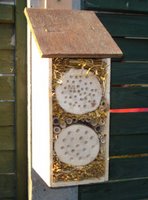
“I believe in a zone of privacy.” Hillary Clinton (American Senator from New York since 2001 and First Lady (to Bill, 1993-2001).
One of permaculture’s key planning tools, is the concept of “zones”. Patrick Whitefield explains it thus: “The principle of zoning is that whatever needs the most human attention should be placed nearest to the centre of human activity. Thus an intensive vegetable garden, which needs daily attention, is best placed in view of the kitchen window, whereas a timber plantation, which may not need visiting from one year to the next, can be far away.” The Earth Care Manual: A Permaculture Handbook For Britain & Other Temperate Climates p27. The zones are (roughly) described as follows:
Zone 0, the house itself…perhaps the private zone Hillary is referring to!
Zone 1, the kitchen garden with herbs readily at hand to cook with and salad crops which need plenty of looking after.
Zone 2, stuff which requires more room than zone 1, yet still needs daily care such as poultry runs and maincrop vegetables.
Zone 3, larger-scale again, farmland, including pasture.
Zone 4, rough grazing and woodland, so with much less human influence than before.
Zone 5, wilderness, that bit of land left for wild plants and animals.
You can instantly see that not all designs would necessarily have all the zones and although the books often show diagrams of zones as neat, mandala-like concentric circles, there is often a lot of compromise necessary to do with individual site and circumstance. Far from being completely untouched, I think that zone 5 can often be managed for the benefit of wildlife, i.e., to better effect than if just left alone, and this is particularly true of a small suburban garden, where zone 5 could consist of several separate elements such as a bird feeder and bath, boxes for birds, bats and over-wintering insects, and a pile of leaves and sticks left in a corner under a hedge for small mammals to hide and hibernate within. Part of the design of our holiday gite garden is to act as a demonstration of small-space permaculture and so I built a bird box and Gabrielle built a solitary bee box
Far from being completely untouched, I think that zone 5 can often be managed for the benefit of wildlife, i.e., to better effect than if just left alone, and this is particularly true of a small suburban garden, where zone 5 could consist of several separate elements such as a bird feeder and bath, boxes for birds, bats and over-wintering insects, and a pile of leaves and sticks left in a corner under a hedge for small mammals to hide and hibernate within. Part of the design of our holiday gite garden is to act as a demonstration of small-space permaculture and so I built a bird box and Gabrielle built a solitary bee box as part of our zone 5. Living actually in the countryside, you’d be forgiven for thinking that there were enough nooks and crannies, holes in walls and spaces under eves for all manner of insects and birds and such artificial houses were unnecessary but, as I say, it was the demonstration element that deemed them necessary.
as part of our zone 5. Living actually in the countryside, you’d be forgiven for thinking that there were enough nooks and crannies, holes in walls and spaces under eves for all manner of insects and birds and such artificial houses were unnecessary but, as I say, it was the demonstration element that deemed them necessary.
So, we were mightily surprised and amused to see a solitary bee crawl (see photo at top) into one of the holes in Gabrielle’s creation today, just two days after it was put up in the garden. It spent some time in there, perhaps to lay eggs, before exiting and flying off. All this talk of places for wild animals to live unfortunately reminds me of the sometimes-unhappy time I spent in an old mill I bought (and sold) when I first came to France. It had edible dormice that lived in the attic and used to crawl out of holes in the wall and run horizontally along the walls, their grip aided by some weird French fabric wallpaper and a pine martin that lived above my bedroom and used to keep me awake at might. Then there were the wild bees and hornets, etc...a case of getting zones 0 and 5 badly mixed up, I guess!
